State University of New York Maritime College (SUNY)
Summer Sea Term
Naldo R. Garcia, 1/C, Marine Environmental Science Major, SUNY Maritime College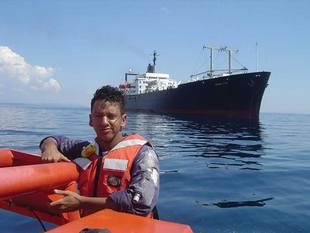
Naldo Garcia on the fast rescue boat while the training ship is at anchor.
Summer Sea Term 2006 was a remarkable experience for those who had never gone out to sea. In addition to affording us the opportunity to visit foreign countries, being aboard the Training Ship Empire State VI for two months gave us intensive "real life" experience and training for obtaining either the third mate’s or third assistant engineer’s license. Cadets also received an understanding and appreciation of the natural world (i.e. heavy seas, strong winds and intense rain) that one encounters during extended periods at sea. By way of example, our trip across the Atlantic, which took a little less than two weeks, moved us through some interesting weather patterns. We encountered 15-20 ft seas and even gale force winds. Through pre-cruise and onboard cruise training we learned that these condition influence ship’s speed and how to work with varying weather conditions. We discovered how essential it is to know how to read and interpret charts as well as meteorological information.
Meteorological and navigational information is received daily through the ships NAVTEX, which was read by cadets and officers who then determined if any of the information was applicable to our ship or should affect the voyage plan.
Before the T.S. Empire State VI departed across the Atlantic, she was anchored off Montauk, New York to allow several cadets to join the ship. While at anchor, a well structured strong cold front approached from the west. Observing the movement of this front was impressive and represented a first real life experience of this type of meteorological phenomenon for many of the cadets and officers onboard. Wind speed changes and dramatic temperature drop of several degrees over the course of a few minutes were felt as the front moved overhead.
While at sea, the officers ensured that the cadets made weather observations on a daily basis and sent out weather reports at least every 6 hours. Since watches were stood on 4-hour rotation, the cadets on watch were required to send at least one weather report at the designated times (0000Z, 0600Z, 1200Z and 1800Z). For training purposes and familiarization with the weather observation, there are also reports sent out at 0300Z, 0900Z, 1500Z and 2100Z. This allowed all cadets to send at least one weather report per watch. The weather reports were sent to the AMVER/SEAS program daily. The AMVER (Automated Mutual-assistance Vessel Rescue) is a reporting system operated by the U.S. Coast Guard. The SEAS (Shipboard Environment (data) Acquisition System) is operated by the U.S. National Oceanic and Atmospheric Administration (NOAA) and is also part of the Volunteer Observing Ship (VOS) program. The AMVER/SEAS reports a vessels description and location to the USCG in case a vessel in distress is in need of help. It also reports both oceanographic and meteorological data to NOAA.
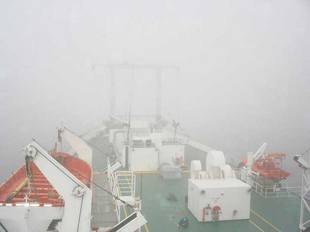
The ship underway while in heavy fog.
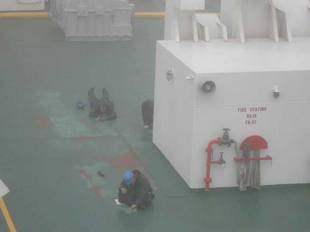
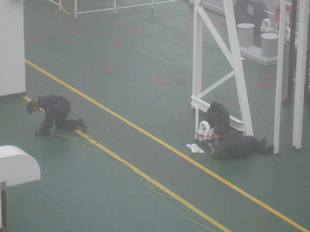
Cadets working on deck while in heavy fog.
After departing from our last port (Dublin, Ireland) en route back to SUNY Maritime College in the Bronx, New York, we encountered heavy fog, which we thought would clear up in a matter of hours. The fog did not clear up in the same timely manner as it had usually done in the past. The route we had taken from Europe back home was different from our usual route. We were in higher latitudes then we usually sail through; the higher latitudes, the colder waters and an extended warm front may have been all that was necessary for several days of fog. The fog was a state of weather we had to deal with, whether we were working out on deck or navigating on the bridge. Navigating was difficult without being able to see farther than the bow of the ship for several days, but it is all part of being out at sea.
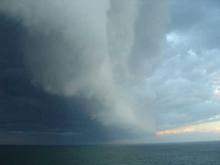
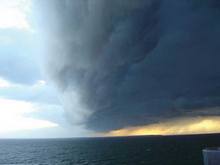
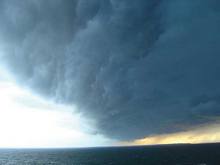
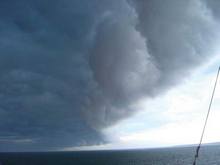
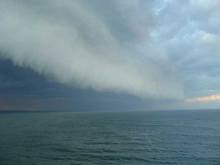
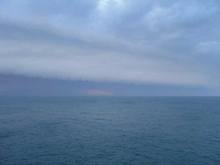
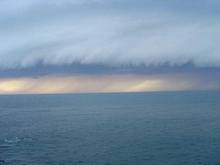
A collection of images capturing the approaching cold front.
The Training Ship Empire State VI is owned by the Maritime Administration, and in time of emergency it can be activated by the federal government. After the devastation of Hurricane Katrina in New Orleans, the T.S.E.S. VI was used to berth over 700 workers and employees from ConocoPhillips to repair an oil refinery in Belle Chasse, Louisiana. The ship was readied in a record time by the cadets and served the employees for six months while in Louisiana.
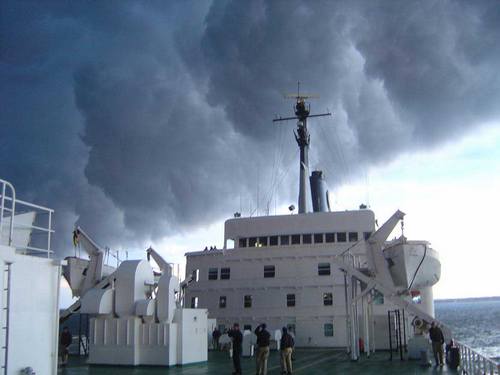
Cold front overhead moving across the house of the ship
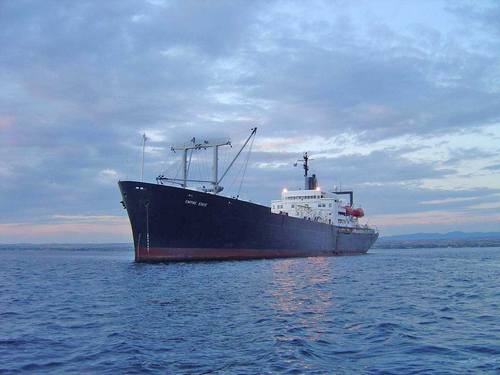
Training ship at anchor
